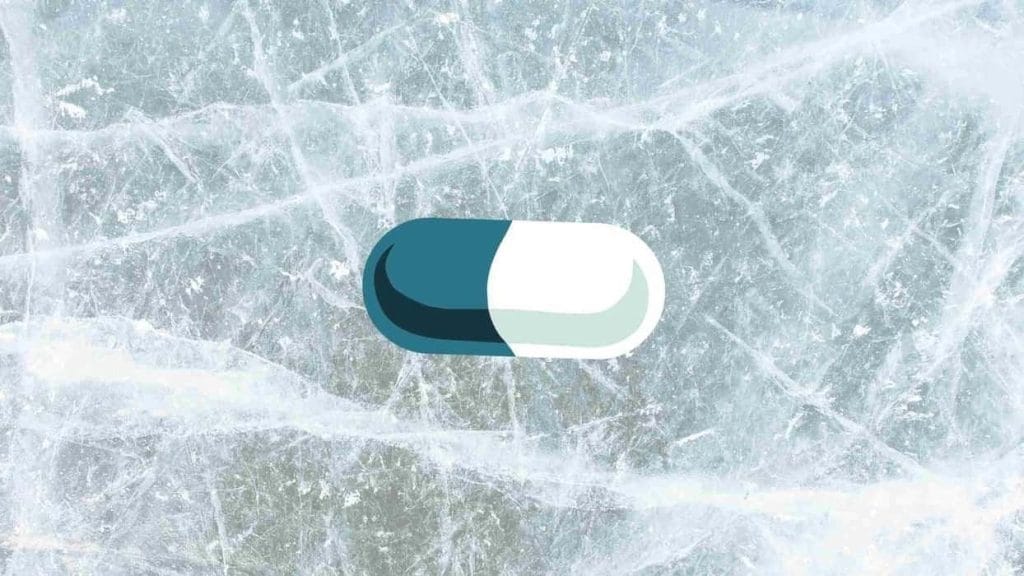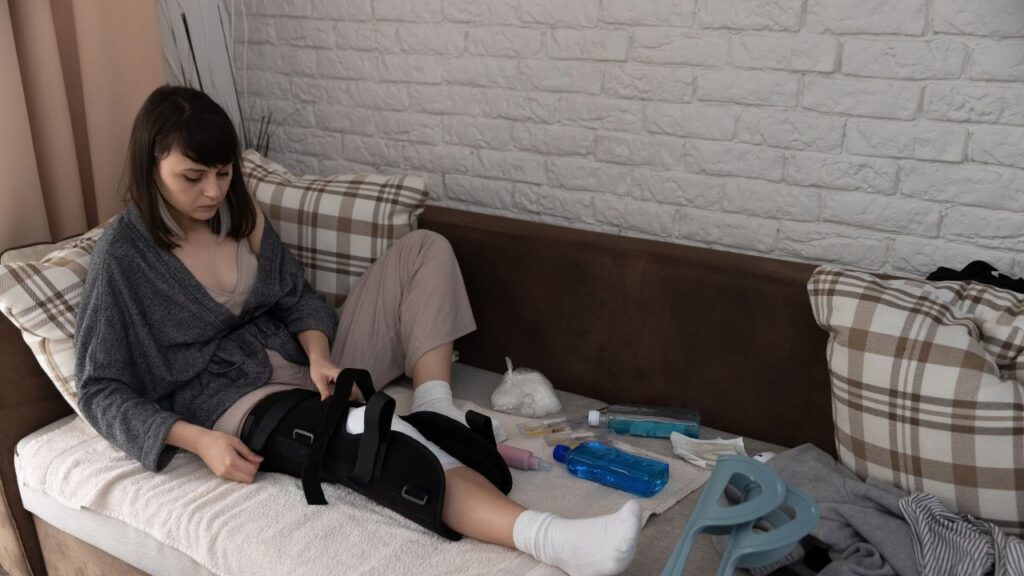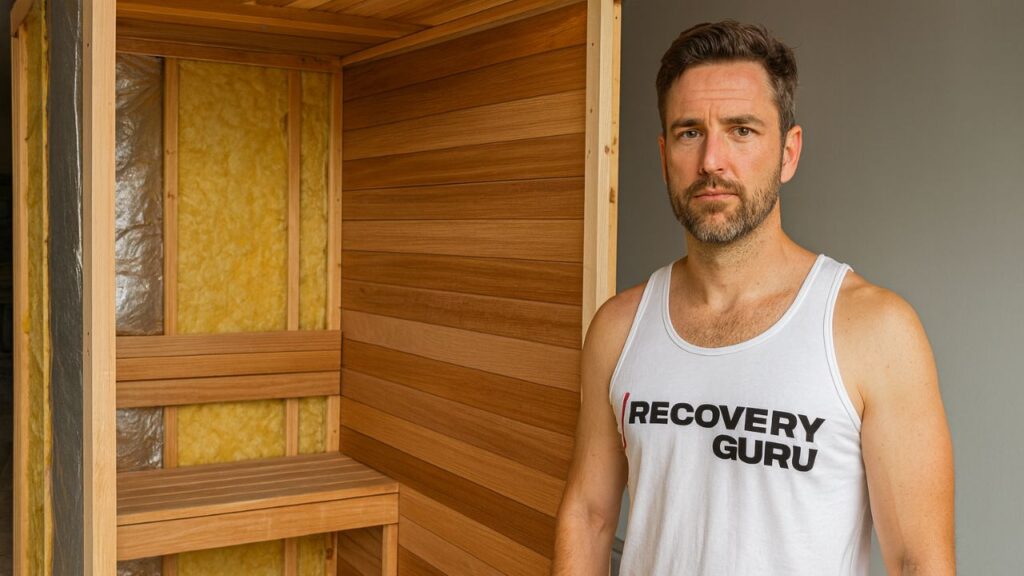Using Cold Plunge For Improving Mental Health – An Ice Bath For The Brain
We include links to products we think are useful for our readers. If you click and buy a product through one of the affiliate links on this page, we may earn a small commission.

Cold Plunge for Mental Health
How your cold plunge recovery ice bath could also be making you happy
Cold plunge or cold water immersion may be the key to helping reduce anxiety and depression. Some people have reported using ice baths for improving mental health, despite limited specific research conducted.
Of course, taking an ice bath is typically used to recover after a hard workout and reduce pain, swelling and inflammation, but, cold plunge also has some pretty powerful neurological and neuroprotective benefits that could be a game-changer for improving mood.
Cold plunge is typically done in a controlled environment like in a purpose built ice bath tub or cold plunge pool, but can also be done in more icy environments like a cold water lake, river or even by cutting out a hole in the ice. While the recommended temperature for cold plunge is about 10 degrees Celsius, taking a long cold shower each morning can tick the box for some of the benefits of cold water exposure.
Ice baths have a host of amazing uses for exercise recovery and you are starting to see cold plunge surge in popularity with athletes, even recently featuring as a recovery tool in the Crossfit Games. While most people use ice baths for sore muscles and post workout recovery, we will break down why you are also getting some amazing boosts for the headspace when you ice bath and shed some light on why you feel so good after taking the plunge.
What Is The Science Behind Ice Baths?

Exposure to cold initially activates the sympathetic nervous system and triggers releases in blood endorphins and noradrenaline in levels of 2-3 times higher than base levels. Taking a cold plunge also increases synaptic release of noradrenaline in the brain. What you also see from taking an ice bath or being exposed to the cold in general, is a higher amount of electrical impulses being sent to the brain from peripheral nerve endings due to the cold receptors on our skin being activated.
What you see after a the initial shock of the cold is a shift to the parasympathetic state, which promotes rest, relaxation and improved recovery.
Ice baths also cause a constricting of the blood vessels and a release of shock proteins which can attribute its benefits for recovering after a hard workout. This shunting of the natural inflammatory and swelling process though, has been shown to be counter productive to hypertrophy following strength based training like weightlifting or resistance training.
Non-shivering thermogenesis is a process of directly producing heat without shivering. This type of thermogenesis is created through the the production of brown fat. This is also regulated by the release of norepinephrine through exposure to the cold. The increase of metabolic expenditure can increase fat utilisation and lead to improved body composition, improved metabolic efficiency and weight loss.
How Do Ice Baths Affect The Brain?

Cold plunge releases norepinephrine, adrenaline and boosts dopamine
Ice baths activate the sympathetic nervous system, heart rate increases, pupils dilate, blood vessels constrict and the vagus nerve is stimulated, causing a cascade of positive effects. The release of norepinephrine and adrenaline from taking an ice bath could have some effect on the brain that show great promise for alternatives to prescription medications.
If you take regular ice baths like I do, you may be familiar with the before and effects of a single ice bath session on your energy levels and mood. Having gone into 100’s of cold plunge sessions with low energy, lethargy and low mood, then come out the other end full of vitality, energy and good vibes it is quite obvious that cold plunge has some pretty awesome affects on the brain.
In a study from 2008, cold shock was shown to significantly increase the production of the hormone and neurotransmitter, norepinephrine, in the brain which significantly impacts mood and energy. What norepinephrine does is play a huge part in your state of mind including mood and emotions so increasing it can cause big shifts in overall mood and feelings of wellbeing.
Depression and anxiety are two of the biggest mental health conditions globally. As a caveat, if you are experiencing any mental health issues, you should get in touch with a professional for support and medical advice and only use the information in our article for educational and informative purposes.
The link between ice baths and depression is also through norepinephrine. Norepinephrine plays a large role in depression and evidence suggests that imbalances in norepinephrine, serotonin and dopamine can have a negative effect on mental health. Although there have been limited specific studies on the direct link between ice baths and depression, it could be suggested that anecdotal evidence shows the norepinephrine boost from a cold plunge session of just 2 minutes could also boost mood.
The good news is, if you don’t have a purpose built cold plunge yet, some of these benefits still apply to taking a cold shower every day (that is, if you don’t live in a tropical environment where your tap water comes out luke warm). In a 2014 review, the cortisol levels of participants who took cold showers decreased significantly, showing that cold exposure can reduce hormones related to stress and poor mood.
A note on Cold Plunge and Mental Resilience
Not only does exposing the body to cold water for periods of time create scientifically proven changes in the brain chemistry and physiological changes that benefits recovery from various forms of exercise like running, but it also has the potential to help build mental resilience.
Interestingly, there is a marked difference in the effects of cold plunge on the mind and body if the exposure to cold water is done deliberately or under conditions of stress and danger. Cold exposure is a type of stress that can be adapted to with the right mindset and regular conditioning.
Dr. Andrew Huberman describes the multiple challenging phases in taking a cold plunge as “walls” and describes “scaling the wall” of each mentally challenging experience in the ice bath. The idea of adapting to stressful situations to build mental resilience is a theme used in many areas of elite sports and military selection processes like the US Navy SEALS and RAN Clearance Divers. Focussing on the breath is an important factor in overcoming these walls, and is important to understand how to use the breath in these situations.
By using cold plunge, learning to stay and find peace in the mind and body can also help you learn to sit with other uncomfortable experiences in life. Stress, in this case, can be a positive stimulus. Although stress is seen as a completely negative things for mind and body, cold plunge can help you reframe stress and the adaptive powers that are ‘hormesis’, which we have discussed in other articles and is also the basis of the Nassim Taleb book, Antifragile. It is also talked about in depth by Dr. Rhonda Patrick in her podcasts and on her blog, FoundMyFitness.
Dr Rhonda Patrick discussing the hormetic effects of cold plunge and sauna
How To Take A Cold Plunge
There are loads of cold plunge protocols and no one way that is best to do ice baths. As a rule of thumb, cold plunge or even a cold shower, is cold enough if it creates some kind of body shock and gives you an urge to want to get out but is safe enough for you to stay. The temperature, duration and timing of the cold plunge as well as the breathing and movement practices that are combined with cold plunge practice are also elements that can be adjusted to get a different result.
If you are ready to take an icy plunge, here the best things to consider for an ice bath to make the most of it:
Choose your ice bath tub: Do you have the budget for an ice bath tub with a built in chiller like the Plunge Cold Plunge or do you need to opt for something slightly less expensive like the Ice Barrel which requires ice to chill each plunge. With these options, it is also important to decide whether you want to be standing or laying down in a bathtub style position. Personally, we prefer standing up in a cold plunge for sure. Check out our Ice Barrel Review and our Cold Plunge review for greater detail.
Time your plunge: We don’t necessarily mean time the length of your plunge, but more so when you take your cold plunge in relation to the time of day and relevance to training and recovery. Consider what exercise type you are recovering from and what your recovery goals are. We discuss this in our sauna vs ice bath article.
Keep it cool (but not too dangerous). Your ideal ice bath should be around 8-15 degrees C or 48-59 degrees F. Anything below is for people who are conditioned, and anything above this range are for people who are beginning and want to start to condition the body for cold exposure by using a cold shower each morning for example.
Keep it short and sweet: The aim is not to come out of the ice bath with blue lips and fingers. The ideal length of time is about 10 minutes of accumulated time. As little as 2 minutes also does the trick.
Cold Plunge Temperature
What is the best temperature for cold plunge? The temperature we aim for in our cold plunge is 10-15 degrees Celsius. With an ice bath fitting with its own cooling system like the Plunge Cold Plunge or the PlusLife Health Ice Bath, this temperature can usually be set on a digital dial. If using an inflatable or portable ice bath, 3-5 bags of 5kg ice is usually enough to cool down an adult sized ice tub and used between 2-3 people until the ice melts and the temperature rises beyond suitable for cold therapy. You could always install an ice machine at home next to your ice bath to have a regular supply of ice to cool the ice bath.
If you are not using a floating temperature gauge in you cold plunge, a general rule of thumb for an acceptable temperature to do an ice bath or even cold shower is that the water should cause you a degree of body shock and breathlessness that gives you an urge to leave, but you can safely stay with some self-control.
Although there is no scientifically perfect temperature to set your ice bath at, experts recommend that below 15 degrees is a good start, and the closer you can get to zero the better. You ideally want to break the thermal barrier that your skin provides to access the benefits like shock proteins and brown fat production.
Cold Plunge Duration
How long should you spend in an ice bath? Some of the research on cold water exposure had subjects stay in the cold water for about 1 hour. Luckily, the temperatures in these experiments we slightly warmer at around 24 degrees, meaning if you reduce the temperature you can achieve the desired result in 5-10 minutes of accumulated cold exposure.
If 2 minutes is all you can manage, push yourself to do at least three rounds of two minute cold plunges to accumulated enough time in the cold to reap the rewards.
Cold Plunge Timing
When is the best time to do an ice bath? Have discussed timing of cold plunge in our sauna vs. ice bath article. The interesting thing about cold plunge is that, despite the old advice of Rest, Ice, Compression, Elevation (RICE), there is some evidence to suggest that icing the body after strength training or weightlifting can be counterproductive to recovery.
In this way, ice baths are perfect for incorporating into the recovery routine at a time when the need to perform again is on the next day or sooner and you are trying to prolong the natural processes of swelling and inflammation to later on in the week or season.
Timing your cold plunge to either early in the morning or not long before bed can be a great way to affect body temperature, which is a gateway to manipulating your body temperature for both waking up faster and setting a good sleep wake cycle, and falling asleep faster.
Cold Plunge Wim Hof Breathing Practices
Watch Wim Hof explain the breathing method
Who is Wim Hof? If you are already into a regular cold plunge practice, you have most likely come across the work of the Iceman, Wim Hof. If not, the protocols of movement, breathing and cold exposure form the basis of Wim Hof’s ideology which he has tested in a medical setting and proven with hundreds of successful group exposures to extreme conditions using his methods.
Wim Hof has a handful of impressive records and has somewhat of a guru status around cold plunge with loads of fans and cult following on social media platforms. The Wim Hof method is now a qualification that can be attained through online or group training, however it can also be broken down into a simple breathing practice that is similar to a type of yogic breathing.
The basic method of incorporating Wim Hof breathing into your cold plunge protocol is as follows:
Prepare yourself seated in a comfortable meditation style position or laying on your back with arms and legs outstretched.
Begin by taking 5 to 10 deep breaths in through the nose and out through the mouth.
Take in a full and strong inhale through the nose.
Let out a relaxed exhalation through the mouth about 3/4 of your lung capacity
Repeat this cycle for 30 breaths.
On the last breath, exhale to 90 percent and hold your out breath for as long as possible.
When you feel a strong urge to breathe, inhale through the nose and hold for 15 seconds before releasing.
Repeat this whole cycle for 3-4 rounds.
Now it’s time to cold plunge!
Are There Any Risks Associated With Ice Baths?
Of course, exposing your body to temperatures that cause extreme physiological responses should be approached with caution. Always do an ice bath in a controlled environment like an ice bath tub or cold plunge pool that you can easily exit if you begin to experience symptoms of hypothermia.
It is also recommended to never do a cold plunge solo, instead using a cold plunge buddy that can also keep time and talk you through the peaks and troughs of your session together.
How Does An Ice Bath Compare To Sauna For Recovery?
Ice bath vs sauna for recovery produce some similar effects for recovery and some very different effects that are exclusive to one or the other. The truth is, it depends on the mechanics of your movement, what your recovery goals are and when you next need to perform.
Generally speaking, ice baths can be used as a rapid recovery protocol for performing again within a short period of time and prolonging some of the natural inflammatory and swelling responses that occur after exercise. Keep in mind, ice baths have been shown to be somewhat detrimental for muscular hypertrophy goals following strength training, shunting the process required for muscle growth.
Saunas, on the other hand, can be used as an adaptive form of recovery and can generally be used after any form of exercise. For strength training, taking a sauna can significantly boost human growth hormone levels beyond the normal boost gained from a strength based workout. And for cardiovascular or conditioning training, saunas are good as vasodilation or opening of the blood vessels to allow for greater blood flow to repair and rebuild damaged tissues.
Conclusion on Cold Plunge For Mental Health
Cold plunge has shown to be a common boost to many peoples mental state and indeed such a huge return on investment. Just a couple of minutes worth of cold exposure is enough to send the body into relaxation mode and while partaking in a freezing cold plunge you will be hard pressed to focus on much else but keeping alive and controlling the breath.
Cold plunge is also a good way to bring people together after a workout, race, team game or for a community workshop as a way to practice good wellbeing habits that produce positive short and long term effects.
The quality of your mental health affects every other part of your life including the relationships you have throughout life. If a daily cold plunge of a couple of minutes is enough to access better control of your headspace then you’d better jump on board and start fanning out to Wim Hof and get yourself or cold tub, or at least start your daily cold shower. If you are struggling with mental health, please reach out to a professional, friend or family and start the conversation. This too shall pass.
Smarter recovery for humans…





